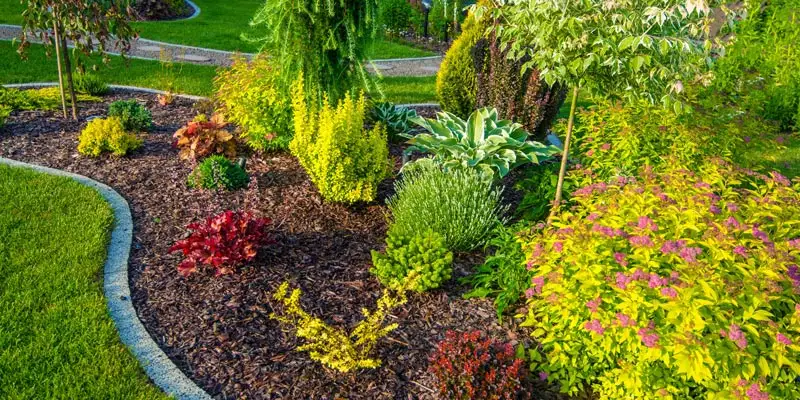4 Easy Facts About Landscape Design Shown
Landscape Design for Beginners
Table of ContentsLandscape Design Things To Know Before You BuyLandscape Design - QuestionsThe Only Guide for Landscape DesignNot known Factual Statements About Landscape Design
When designing a domestic landscape, the most essential step is to place an intend on paper. Developing a plan of attack will save you time and cash and is much more most likely to lead to a successful layout. A plan of attack is created via the 'style process': a step-by-step method that considers the environmental conditions, your desires, and the elements and concepts of design.The five steps of the style process include: 1) conducting a site inventory and analysis, 2) determining your demands, 3) developing useful diagrams, 4) developing theoretical style strategies, and 5) drawing a last layout strategy. The very first 3 actions establish the aesthetic, practical, and gardening demands for the design. The last 2 steps after that use those demands to the creation of the final landscape plan.
This is an essential step for both plant choice and placement and situating family activities and features. It's essential due to the fact that the very same environment problems that impact the plantstemperature, moisture, rainfall, wind, and sunlightalso impact you, the user. The following step is to make a list of your requirements and desiresthis helps you establish exactly how your lawn and landscape will certainly be used.
The functional layout is after that utilized to situate the task areas on the site and from this layout a conceptual strategy is developed. The last action is a final style that consists of all the hardscape and growing details that are essential for installment. Throughout the design process there are ten important things to think about: for plant option and activity area by considering what you want and require to help determine shapes and arrange areas by assigning activity locations and connecting with aspects for both the atmosphere and the customer by utilizing massing and layering techniques such as shift locations and focal points in the products, the shades, and the surface area textures for the development and upkeep of plants by utilizing sustainable design techniques An extensive inventory and evaluation of the site is very important to identify the ecological conditions for plant development and the best use the site.
Facts About Landscape Design Uncovered
It is constantly best to make use of plants that will prosper in the existing soil. Where plants grow well, keep in mind the soil problems and use plants with comparable growing requirements.

Sun/shade patterns, the quantity and length of exposure to sun or shade (Figure 1), produce microclimates (occasionally called microhabitats) - Landscape Design. Recording site conditions and existing greenery on a base map will expose the place of microclimates in the yard. Plants typically come under 1 or 2 of 4 microclimate categories-full sunlight, partial color, color, and deep shade
The Facts About Landscape Design Revealed
Figure 1. Sun and shade patterns. Credit History: Gail Hansen, UF/IFAS It is crucial to note all the status quo on an accurate base map when doing the website stock (Figure 2). Energies such as high-voltage line, septic storage tanks, below ground utilities and roofing system overhangs establish plant place. have a peek at this website Use a land surveyor's plat of your property for the boundaries and location of your home.


Budget concerns consist of the materials, preliminary setup costs and the on-going maintenance expenses. Figure out the moment and money you are eager to take into maintaining the plants and hardscape-be reasonable regarding your objectives and ability. Figure 3. Existing usage areas. Credit Rating: Gail Hansen, UF/IFAS Number 4. Recommended usage areas. Credit Score: Gail Hansen, UF/IFAS There are numerous different landscape style themes- from easy to complex, but it is handy to select one to lead your plant and product option.
Lots of individuals discover it valuable to search in horticulture publications and publications for concepts. This is a great begin, yet know that the gardens in the pictures were chosen because they are outstanding examples. Consider the images with a vital eye to gather ideas that you can adjust to your interest level, your budget plan and your website.
Determine if you want to open your lawn, shut your lawn, or a little of both, to these views (Landscape Design). To put it simply, do you want the garden to enclose the room around you and associate mainly to your house, or do you desire the yard to open views and look outward, associating with the surroundings? This will certainly give you a beginning factor to consider a theme
The 9-Second Trick For Landscape Design
This is called "local color", which suggests it fits with the environments. There are both kind themes and design motifs. Every garden needs to have a type theme, however not all yards have a style theme. Actually, numerous domestic gardens have no specific style except to mix with your house by duplicating details from the design such as products, shade, and kind.
In a kind motif the organization and shape of the rooms in the yard is based either on the shape of your i loved this home, the form of the areas in between your house and the building limits, or a favorite form of the property owner. The kind style identifies the form and company (the try here format) of the spaces and the web links between them.
